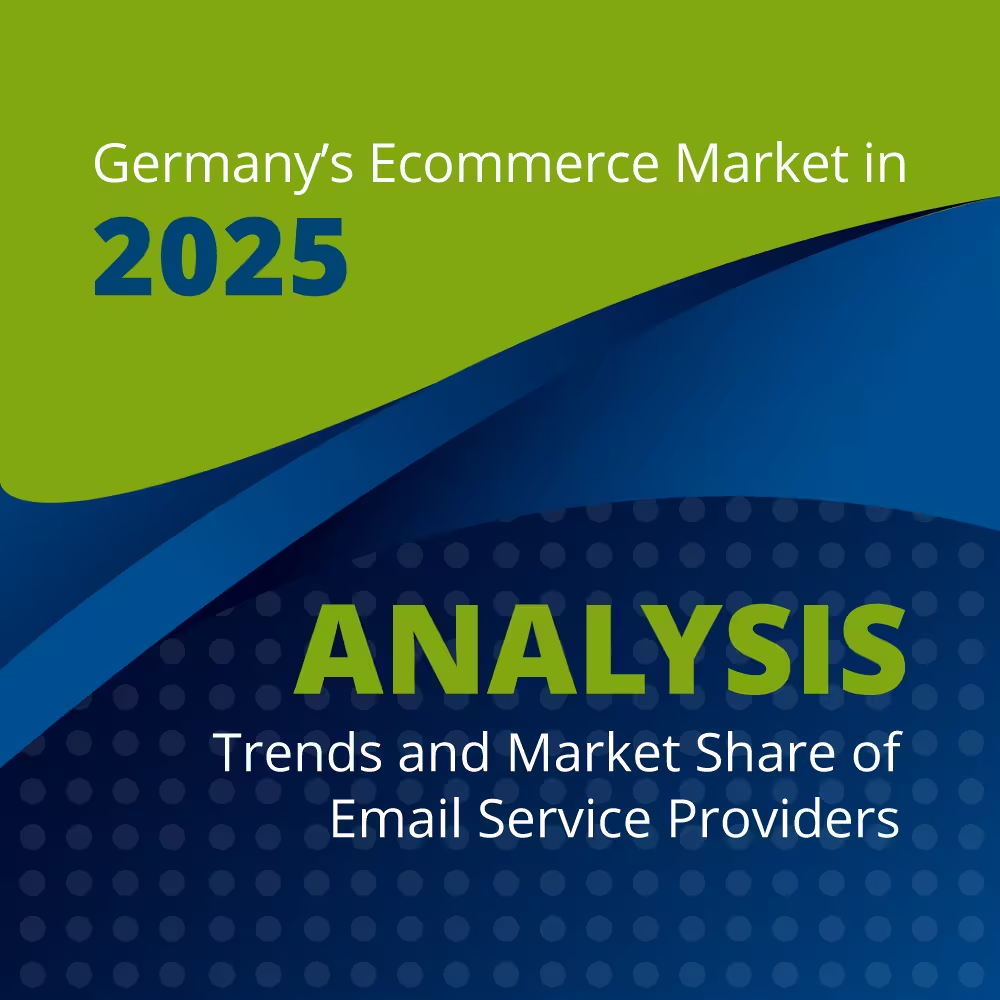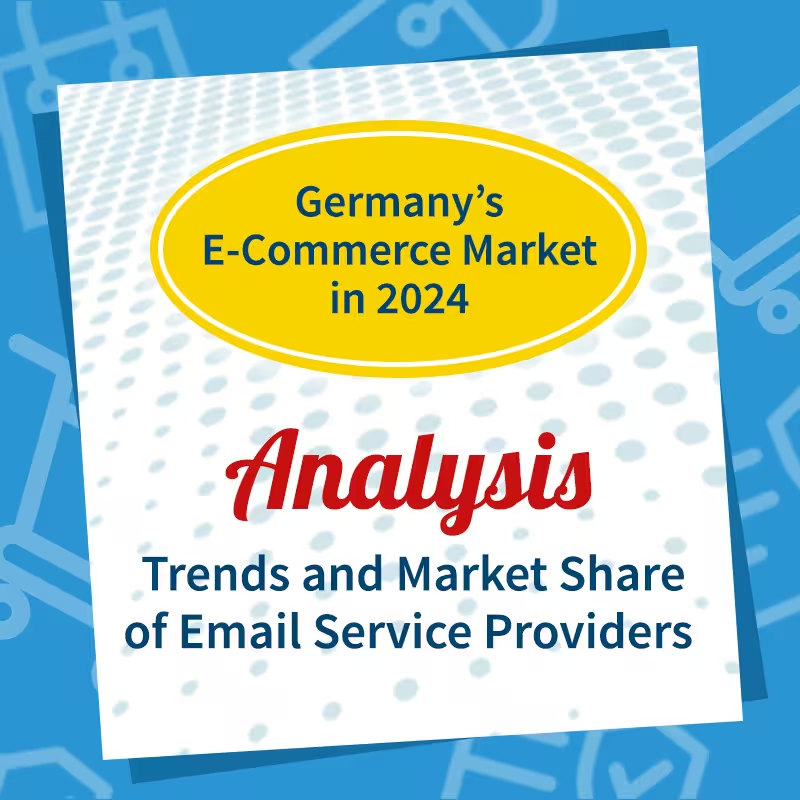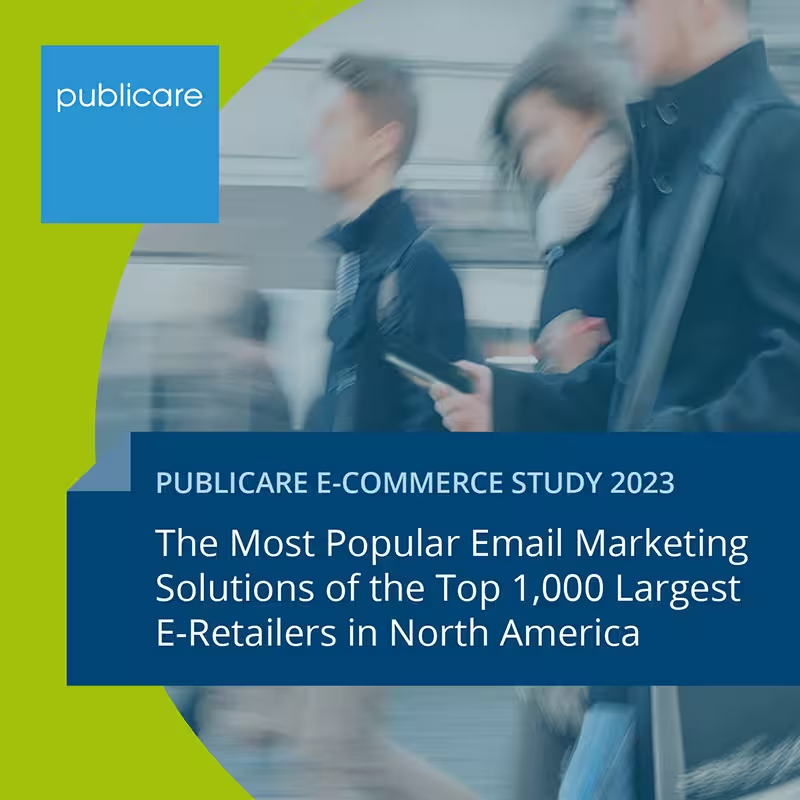The four underrated mechanisms for generating sustainable leads
How much should a lead cost, and which lead generation methods are worth the investment? These are questions that come up time and again in our discussions with marketing managers. However, before companies allocate ever-larger budgets to external lead acquisition, they should consider their own channels: where can more and better-quality leads be generated using simple means?
Our consulting projects and the results of our email marketing study for e-commerce in 2025 demonstrate that, despite investments in address purchases and paid media, there is often untapped potential in four key areas.

Use shop opt-in consistently — 100% legally secure opt-ins from every purchase
Anyone who runs an online shop already has one of the most valuable sources of contact of all: their own buyers. This is because Section 7 (3) UWG* expressly allows companies to contact customers by e-mail for advertising purposes after a purchase, provided that certain requirements are met. However, many companies do not consistently use this legal basis, as they believe that opt-ins must always be actively queried with a separate checkbox and confirmed via a double opt-in confirmation mail yas.
According to Section 7 (3) UWG, you as a company may use the e-mail address that was provided to you in connection with the sale of a good or service to promote your own similar goods or services. The prerequisites are:
- Customers have not objected to the use.
- When collecting the email address and whenever you use it, you will be clearly informed of your right to object at any time.
- They only promote their own similar products or services.
If implemented correctly, this means that every purchase is automatically a legally secure consent for your email communication — without an additional opt-in and without a double opt-in process. You get:
- 100% conversion rate: Every buyer is automatically available for promotional emails.
- No DOI losses: No risk that the DOI confirmation request will end up in spam or be ignored.
- Highly qualified contacts: These people have already shown confidence and are interested in your offers.
- Immediate usability: You can start relevant communication right after the purchase.
A great deal of potential is not realised in practice
Our analysis of the 1,000 largest German online shops 2025 shows that around a third completely dispense with opt-in options in the checkout process, such as a checkbox for subscribing to the newsletter or a notification about email communication in accordance with Section 7 (3) UWG. However, this legally sound approach is one of the most valuable sources of leads. The implementation is straightforward: Place a clearly visible message on the page where you request the email address, for example: 'After your purchase, we will inform you by email about similar products and offers from our range. You can object to this at any time.' In your email marketing system, you must then define how you want to deal with contacts who 'normally' sign up for your newsletter and shop contacts. The communication channels for shop contacts must be carefully planned. Ensure that you only send contacts your own offers and similar ones, and provide transparent information in the footer about the basis on which emails are sent.
Important for B2B shops: Section 7 (3) UWG applies both in the B2C and B2B sectors. Whether you sell services, consumables, machines, or software licenses — every purchase is an opportunity for long-term customer loyalty through relevant email communication.
Smart aiming instead of continuous fire
Many online shops attract newsletter subscribers with discounts: ”Subscribe to the newsletter now and save 10%.“ The conversion rates of such welcome discount campaigns are good. But the actual goal of gaining contacts with permanently usable marketing consent for lifecycle marketing is often missed. This is because many of these recipients unsubscribe after their first purchase, as soon as they receive the first regular newsletter.
The problem: Wrong expectations and wrong timing
The cause is rarely a lack of interest, but rather due to two factors:
- Many companies start with offers for the next purchase immediately after sign up, although the subscription was often taken out at the same time as a purchase. It is simply nonsensical to force customers to buy again before the goods have even arrived or have been used for the first time.
- Lack of relevance: Communication takes into account neither the individual repurchase rhythm nor suitable connection products.
The solution: Create individual welcome journeys with well-considered timing throughout the customer life cycle. Make sure you differentiate between new subscribers who have already made a purchase and those who have not. While leads receive attractive offers and incentives to make their first purchase, customers who have already purchased receive helpful tips on how to make optimal use of their purchase and learn more about the brand's services and manufacturing processes. Other mailings in the Welcome Journey provide inspiration, application examples, and insights into the brand, its unique selling points, magazine content, and customer service.
Use the welcome flows specifically to learn more about your contacts by evaluating which product categories and service links are being clicked on. An evaluation of link profiles is often more meaningful than expressions of interest in the preference center.
Recipients should only start receiving regular newsletters once they have completed the welcome journey. Supplement this with targeted routes for the first to second purchase. To achieve this, analyse your customer data and shopping baskets to identify typical repurchase cycles. Only when the derived repurchase time is approaching should you start sending offers for the second purchase and exclude contacts from the newsletter while they are on these campaign journeys. Promote complementary products. For example, you could use replenishment campaigns to remind customers to replace consumer goods in good time ('Empty shampoo? Time for a new order'). For consumer goods: Focus on meaningful cross-selling campaigns for similar or complementary products.
Minimize opt-in losses — check confirmed opt-in as an alternative
How many people who have actively requested your newsletter do you lose as subscribers every day? For many companies, the double opt-in confirmation rate is just 45–70%. This means that 30–55% of interested contacts never confirm their subscription, either because they regard the confirmation email as irrelevant ('I've already signed up'), because it ends up in their spam folder, or because they overlook it.
The legal alternative: Confirmed Opt-In (COI)
Although double opt-in (DOI) is considered the most secure option, as we explained in our blog post ”14 myths about when you can send promotional emails to whom — and when not”, it does not reduce the practical legal risk in most business scenarios. In many cases, advertisers can confidently rely on Confirmed Opt-In (COI), which enables significantly higher conversion rates. The registration is saved and used directly. A confirmation email is sent, but activation is not necessary. Depending on the target group and context, you can increase your mailing list growth by 20 to 70%.
When does confirmed opt-in make sense?
You should switch to Confirmed Opt-In when the risk of fake registrations is low. If you already verify the identity of the subscriber in another way when subscribing to an email subscription, for example by logging into a protected customer area or setting up a customer account in parallel, a double opt-in is counterintuitive and superfluous.
In our blog post “Anxiety devours your mailing lists” we explain the differences in detail and demonstrate which method to use in which situation.
Content and services for organic lead generation
Sustainable leads are created when interested parties voluntarily contact your brand, for example at the point of sale, on your website, in your shop, or at events. The challenge lies in turning a one-off contact into an ongoing dialogue. To achieve this, companies must provide interested parties with added value before they make a purchase decision. This can be achieved in various ways: providing style advice can help with product selection; a magazine can showcase exciting trends; a product configurator can simplify complex decisions; and a sizing consultant can eliminate the uncertainty of buying online. Sample packs, test accounts and thematic newsletters offering decision-making tools and best practices relating to the range of products also create relevance without exerting buying pressure. Other options include notifications of product availability or price changes, as well as wish lists and reminder functions that allow users to opt in. These formats create added value and give companies the opportunity to establish lasting relationships with users, who are then more likely to provide their data voluntarily.
For B2B customers, white papers, studies, industry reports, ROI calculators, configurators and early access to new features or beta versions are available. Such offers don't necessarily have to be hidden behind a lead form, as we show in our blog post.
Conclusion: Four concrete levers for sustainable lead growth
It is also possible to generate successful leads without a large media budget. This requires real multi-channel thinking, particularly in terms of strategically incorporating the possibilities of CRM. Rather than investing exclusively in external channels, you should consistently utilise these four levers:
- Take advantage of Section 7 (3) UWG: Turn every purchase into an opportunity for long-term customer loyalty.
- Optimise lifecycle journeys. Focus on communication that is not sales-oriented and respect repurchase rhythms.
- Reduce opt-in losses: Check whether COI is a legally secure alternative to DOI in your use cases.
- Strengthen the appeal of your offers on your own channels. Create low-threshold formats to maintain contact with your leads without putting pressure on them to buy.
These measures deliver more leads and, above all, higher-quality contacts that are GDPR-compliant, sustainable and ready for long-term customer relationships.
Would you like to test your lead strategy and maximise the potential of your channels? Talk to us — we can help you identify the touchpoints at which sustainable contacts can be gained.
*Please note: This article is an English translation of an original text written in German for a German audience. It was prepared for informational purposes only and reflects the context, terminology, and legal framework applicable in Germany at the time of writing. Any references to laws, regulations, or legal concepts pertain specifically to German law and may not apply in other jurisdictions. This translation is provided without any guarantee of accuracy or completeness and should not be considered legal advice.
















